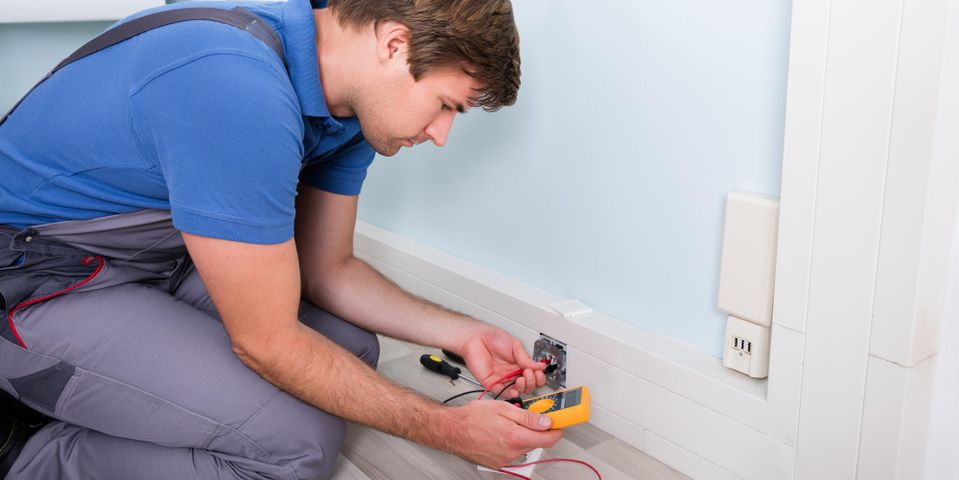
As you get ready to install large appliances, electricians recommend testing your outlet voltage first. Most washers, dryers, ranges, and stoves require more power than regular outlets provide to run properly, and you can’t judge the voltage of an outlet just by looking at it. You’ll need to use a multimeter and these best practices to safely measure voltage.
Safety First
Live outlets present electrocution and fire hazards, which is why you need to handle them with caution. Hold your multimeter properly, grasping both probes in one hand while making sure they don’t touch. If they come into contact with one another, they could short-circuit.
Using the Multimeter
 Once you’re ready to use the multimeter, change the setting for voltage by selecting the AC function, or squiggly line, on the handheld device. Next, connect the leads to the device by pushing the end of the black wire into the negative input and the end of the red wire into the positive input. Then insert the red probe into the shorter vertical outlet slit and the black probe into the longer one. A voltage reading should appear on your multimeter screen within a few seconds.
Once you’re ready to use the multimeter, change the setting for voltage by selecting the AC function, or squiggly line, on the handheld device. Next, connect the leads to the device by pushing the end of the black wire into the negative input and the end of the red wire into the positive input. Then insert the red probe into the shorter vertical outlet slit and the black probe into the longer one. A voltage reading should appear on your multimeter screen within a few seconds.
Normal household outlets should give a reading of 110 to 130 volts, while outlets for large appliances should read between 200 to 240. If the voltage is outside of these parameters, get in touch with an electrician immediately. Your outlets may produce excess current, putting you at risk of electrocution and house fires.
If your home’s voltage seems off, seek help from AA Electric. Since 1947, these electricians have provided home electrical repairs, installations, and maintenance along with telecommunications services to commercial and residential Honolulu clients. Call (808) 841-4131 to book an appointment for power transformer upgrades, fire alarm wiring, or other electrician services. Visit them online to read more about their projects and view a gallery of their work.
About the Business
Have a question? Ask the experts!
Send your question

